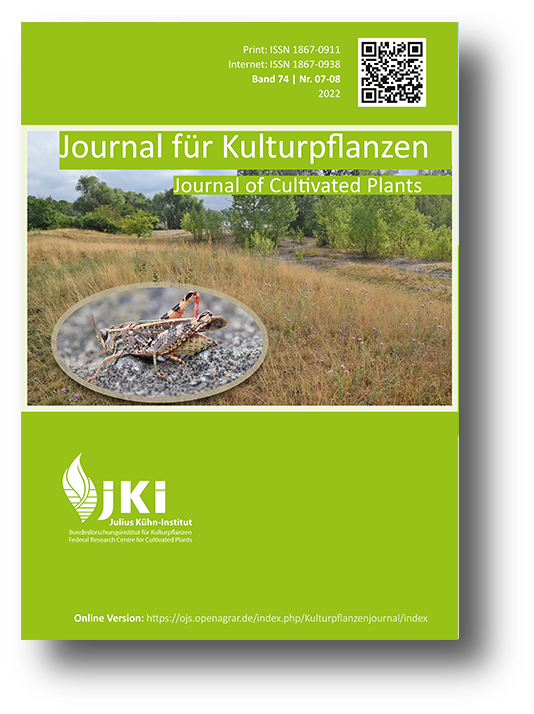Monitoring of the development of honeybee colonies placed near apple orchards in South Tyrol during spring
DOI:
https://doi.org/10.5073/JfK.2022.07-08.02Keywords:
plant-protection-product-residues on dead honeybees, bee-harming insecticides, apple bloomAbstract
This monitoring provides data on colony development and mortality in front of free-flying honeybee colonies in the vicinity of South Tyrolian apple orchards during spring 2014–2016. We compared colonies in two areas, differing in the type of insecticides applied: AP-area with more treatments with active agents harmful for bees (Etofenprox and Chlorpyrifos-ethyl) than in the non-AP-area. According to the Liebefeld Method colony strength was evaluated five times every year from March–June, whereas the collection and counting of dead bees occurred parallel to this at least twice a week. Colonies placed in the AP-area did not show an increased bee mortality compared to colonies from non-AP-area. We found, however, a relationship between increased mortality and residues of harmful insecticides on the bees, independent of the area. Nevertheless, we found no differences in colony development between the two investigated areas, which could have been assignable to the different use of insecticides.
Downloads
Published
Issue
Section
License
Copyright (c) 2022 Benjamin Mair, Manfred Wolf

This work is licensed under a Creative Commons Attribution 4.0 International License.
The content of the journal is licensed under the Creative Commons Attribution 4.0 License. Any user is free to share and adapt (remix, transform, build upon) the content as long as the original publication is attributed (authors, title, year, journal, issue, pages).
The copyright of the published work remains with the authors. The authors grant the Journal of Cultivated Plants, the Julius Kühn-Institut and the OpenAgrar repository the non-exclusive right to distribute and exploit the work.







